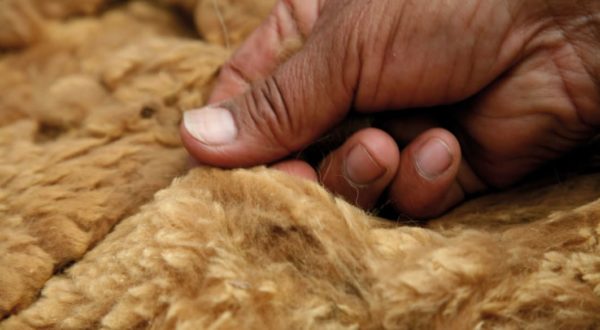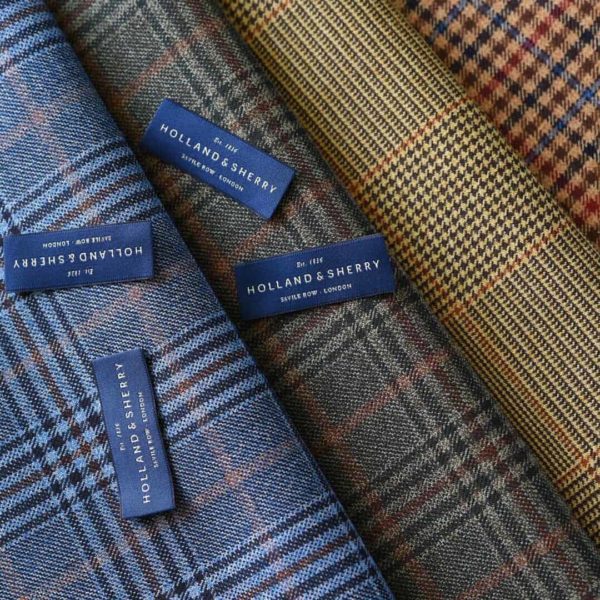Weaving Wool Throughout History
The fabric in your suits has gone through quite a long and arduous process to find itself hanging in your closet. Beyond the work done by your tailor, the craftsmanship of your suit begins with the cultivation of the material itself.

The most popular fabrics such as wool, silk, and cashmere can take months — even years to procure enough fabric to work with. Maintaining livestock for textiles is an industry just as large as the retail of the suit. In this particular blog, we will focus on the wonders of wool and what it takes to make the “super” threads that are offered today.
Far away from the cities, in remote areas dedicated to shepherding and agriculture, farmers are shearing their flocks of sheep, numbering in the thousands, with meticulous attention to detail. It may come as a surprise to note that almost all of the finest wool found today comes from the sheep descended from two species of rams and four ewes. This process has been perfected to science and today, you would be hard-pressed to find a middle or high-end suit that isn’t made from these breeds of sheep. In fact, to ensure such a high standard, there are grand competitions held each year to challenge the farms to raise the most exquisite fleeces. Companies such as Loro Piana and Ermenegildo Zegna are known for their record-breaking bales of wool and the incredible technology used to harvest the material.
You can learn more about these incredible harvests in our editorial section; seek the following blogs on Loro Piana and Ermengildo Zegna.
However, the raw wool found on the sheep is very different from the fabrics that you will find in your suit. They have to undergo several intensive processes to take that form. In order to approach a fineness that is ideal for tailoring, the fiber has to be spun to an incredible tightness. This is where names such as “High-twist” or “loose fibers” on the fabrics emerge. Some of the fabrics are woven tighter or looser to fit a certain style. Worsted fabrics typically require the tightest spun thread to ensure the softest, smoothest look & feel.

What Is A “Super” Wool?
The quality of the thread in a piece of fabric has always been one of the defining features. However, the quality that you see today was only achieved quite recently. To understand this revolution of fabric weaving, you have to go back before the advent of technology and to the origin of the specific breeds of animals that now represent 90% of the world’s stock of wool.
It began in 1789 when six sheep were gifted to a South African Colonel by King Charles IV of Spain. Six years later, these sheep had multiplied to 26 in total and they were sold to John MacArthur, a British officer who was on his way to Australia. Within 40 years, Australia became the world’s largest producer of merino wool ever. Today, these sheep have risen to over 120 million strong.
During that period though, the wool was still rather poor in quality — compared to what the industry is used to now. The wool market at the time had a simple method of measuring the grade of wool: For every 560 yards a thread could be spun from a pound of raw wool they would give it mark called a “hank”. For hundreds of years, the finest wool available was averaging around 60 to 70 “hanks” which were eventually shortened to “60s” or “70s” grade wool.

Breaking the Barrier: Super 100s
Today, there are wools available labeled “Super 240s”. The level of quality is of astronomical difference, providing a look and feel that surpasses even silk and cashmere. Before technology allowed for finer weaving, this type of quality was considered impossible until the turn of the 19th century. However, the Spanish Merino sheep that immigrated to Australia would soon demolish any doubts surrounding this notion.
Soon bales began to emerge that offered quality of up to 80 and 90 hanks. When farmers finally bred the sheep capable of offering 100 hanks, it was a mill in Huddersfield that bought up the entire stock to corner the market, effectively offering their fabric with the exclusive moniker “Super 100s”.
From there on out, textile mills embarked on a global race to continue breaking the barriers of fineness. Festari for Men carries many of the fabric collections that were made by the historic companies that took part in this race. Companies such as Scabal helped pioneer the fabrics that would break the Super 150’s. Our Loro Piana collection offers Super 220s fabrics and we can even custom-make dress shirts with such fabrics.
This is considered the mark of excellence as these fabrics balance their silky finish with ample durability. Fabrics that extend higher than 150s are true representations of passion and curiosity. Today, the fabrics that extend past super 150s represent the ultimate luxury of fashion as it requires incredible feats of technology, tradition, and innovation to master such fine quality. As a standard, this is the quality that you can expect at Festari for Men.
Festari for Men offers wools for suits, shirts, and trousers that range from super 100s to super 240s. We also keep a collection of very rare fabric ranges that showcase the cutting-edge quality and exclusive luxury of wool. Please contact us to learn more about our fabric collections!
